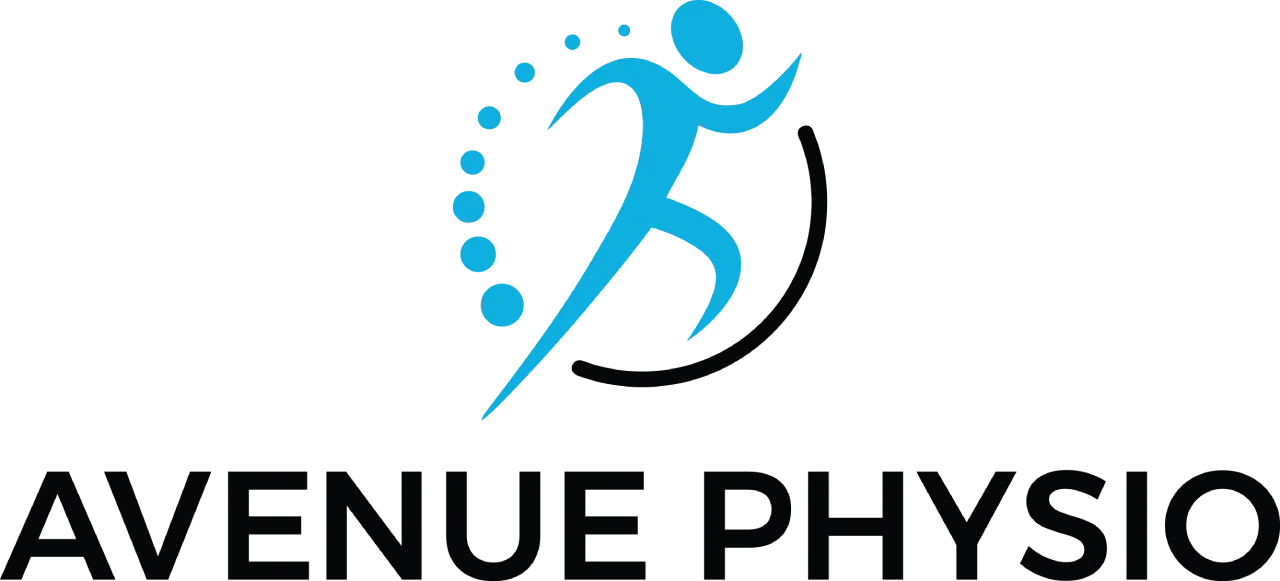
Core Strength and Physiotherapy: A Guide to Better Movement!
What is the core?
Definition the “Core” /kôr/ noun
The central, innermost, or most essential part of anything By this description our core, the muscles of the mid-region of your torso are a fundamental part of our structure. Such an important group of muscles needs some more details to fully understand our CORE.
Welcome to your anatomy lesson.
CORE 101 – The inner Unit
The inner unit is a box structure and is made up of muscles on all sides.
The inner core muscles include
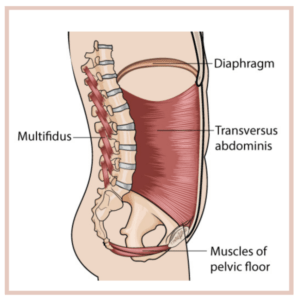
Top – Diaphragm
Main muscle for respiration
Bottom – Pelvic floor
Helps to support our inner organs and stop the flow of urine
Front (Deepest abdominal muscle)
Transversus Abdominus – the fibers run horizontal and act like a corset
Back – Deepest muscle
Multifidus– helps to stabilize our spine
Sometimes the deep fibres of the psoas and the deep hip rotators are also included as part of the inner core. The role of the inner unit is to create a rigid cylinder around the spine during movement to provide stability.
CORE 201 – The outer unit
The outer core muscles or the global muscles are also referred to as the “movers”.
The outer core muscles include:
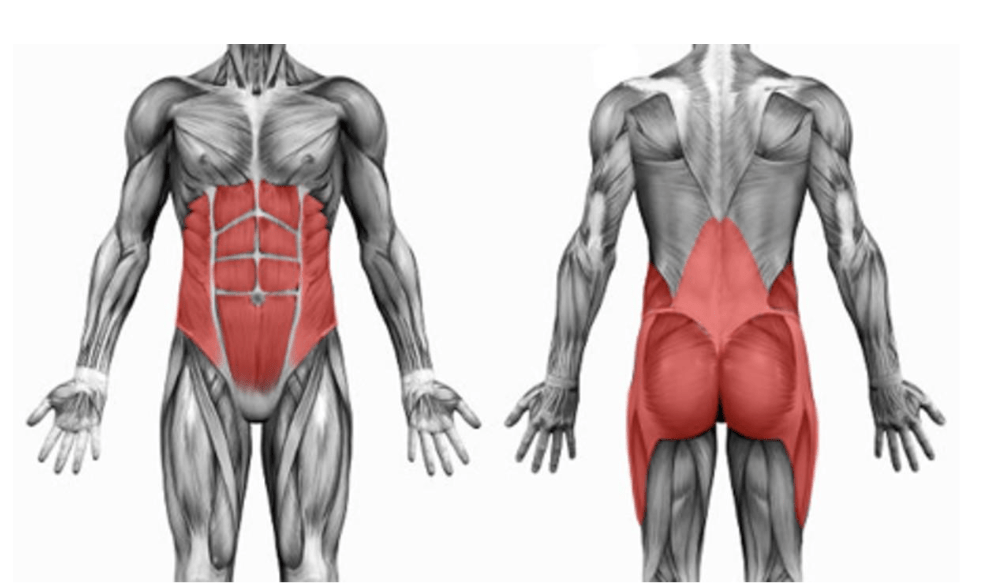
Rectus Abdominus – front – think 6 pack
Flexes your trunk forward. Working with other abdominal muscles it compresses your organs and increases intra-abdominal pressure. This is important for forced breathing, labor, defecation and micturition.
External obliques – sides and front
Involved in rotational movements.
Erector Spinae – back
Extend your back when both sides contract at the same time. When just one side contracts you will side flex. They also help to maintain posture
Quadratus lumborum – back
Contributes to the stabilization and movement of the spine and pelvis
Hip Muscle Groups – glutes
We have glutes of all sizes; maximus, medius and minimus. Our glutes extend, abduct, internally and externally rotate our hips.
Let’s get to the core of the matter
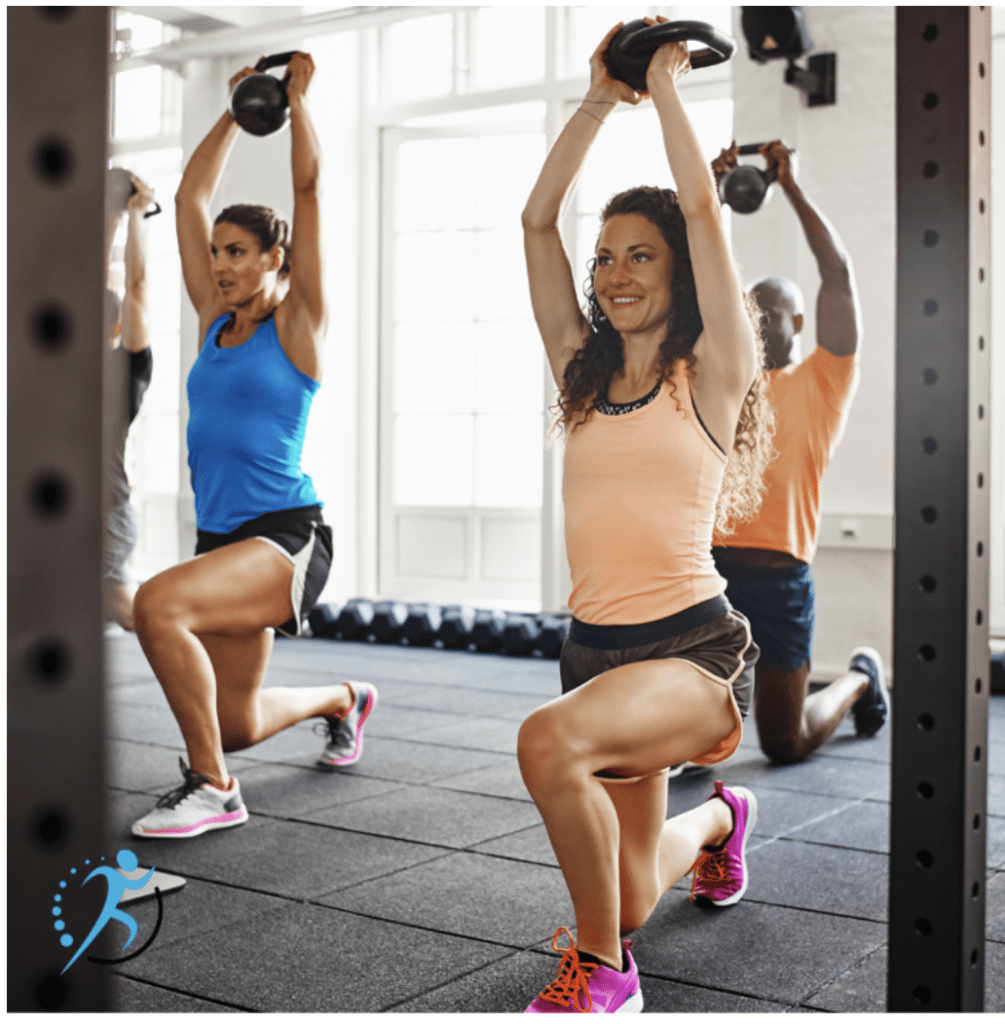
The term core stability arrived in the 1990’s. The term came from studies that showed a change in the timing of the trunk muscles after a back injury and chronic low back pain.
For example people with low back pain showed a delayed contraction of the inner unit muscles like transversus abdominus and multifidus.
These research findings along with influences from Pilates promoted many assumptions about our core in the physiotherapy, rehabilitation and fitness world.
- Some muscles are more important for stabilization of the trunk, the transversus abdominus received lots of attention for having the lead role in stabilization of our trunk.
- Weak abdominal muscles lead to back pain
- Strengthening our abdominal or trunk muscles can reduce back pain.
- A strong core will prevent injury
- That there is a relationship between stability and back pain
As a consequence of these assumptions, the focus became the core. Fix your core and you will fix your back pain. Gyms and clinics started to focus on the tummy tuck, bracing exercises, and sucking it in. this is where myths are born. Myths are what happens when research results are extrapolated and overgeneralized.

Myths About your CORE
Your core must always be tensed and sucked in
No. You need to relax. And breathe. You can’t breathe normally if you are constantly sucking your gut in.
Your diaphragm needs to drop down in the stomach when you inhale so that the lungs can expand. For the diaphragm to drop down you need to relax your abdominal muscles.
No. Our muscles should contract based on the scenario. Whenever we move our muscles should respond. How much stiffness you create in the muscle should be based on the task. You wouldn’t want to always be contracting as if you were lifting a piano when you are only lifting a cup of tea. This would cause too much compression and loading of the spine while you are holding your breathe….all for a cup of tea!
The “core” is dynamic and should react to the scenario that it is being put in.
The Stronger the Core the Better
The back is strong. The anatomy is very robust:
- Large chunky bones
- Strong ligaments
- Tough discs
- Many muscles attached to all surfaces
The design is perfect for carrying loads and absorbing forces.
It is also a good design for movement. The spine can bend forward, backwards, side to side and rotate. At each joint the movement is quite small but overall the total movement of all the spinal segments adds up.
Sit-Ups will Make your Core Strong
Sit ups will make your rectus abdominus strong. Sit-ups may even help you look better in a bathing suit. But make your core strong. No. That is too simple. Sit-ups are only addressing one muscle of the system. The outer unit muscle on the front of your abdomen.
Focusing on only sit-ups can lead to over bracing.
The Core Protects the Back
Yes, the core does help protect the back to some extent. The muscles create a cannister around our spine that gives us stability and allows us to move.
However, it is in actuality our brain that protects our lower back. This area is where our spinal cord and important organs are housed. This area is very important to us and is packed with nerves reporting information to our brains about joint position and movement.
A weak core does not cause low back pain and in some people with low back pain their tend to over tense their ‘core’ muscles. While it is good to keep the trunk muscles strong, it is also helpful to relax them when they aren’t needed.
The Core always Helps
If you have back pain sometimes focusing on contracting core muscles can lead to more pain.
When you injure yourself the brain gets bombarded with signals telling it something is wrong. Your body responds by tensing up the muscles in that area increasing sensitivity of the nerves so you will stop moving and doing more harm.
In most cases the damage is repaired and the pain lessens and the threat of further injury diminishes. The muscle relax and the body returns to normal pain free movement.
However, sometimes a patient’s pain will persist even after the tissue damage is repaired. The muscles remain tensed and altered movement continues. It becomes obvious then that added more tension into the system by encouraging the core muscles to brace even more would not be the correct treatment and could create long term stiffness.
Good Core Exercises Make Your Core Strong
After everything we have learned so far I think we know this answer is more complex.
Your core may be strong but we are looking at a dynamic system. We are talking about movement. We are talking about a system that should react to the task at hand.
A system that is efficient – movement requires energy. Over recruiting for a low load task is inefficient and not protective.
A system that is automatic– it wouldn’t make sense that we have to remind ourselves to contract certain muscles before we perform low load tasks. We shouldn’t have to tell ourselves to pull in our stomachs prior to picking up a cup of coffee.
A system that is balanced – movement requires both stability and mobility. If you focus on too much stability you will eventually lose mobility due to increased spinal compression
The Key take home message is that core stability is defined as the ability to control the position and motion of the trunk over the pelvis to allow optimum production, transfer and control of force and motion to the terminal segment in integrated athletic activities.
In other words the core is the center of our body and it’s function is to stabilize the trunk while the arms and legs can move freely during movement.
How to Assess your Core Strength & Stability:
Curls ups:
The curl-up exercise is one of the most common exercises that target the abdominal muscles. Maximum activity of the abdominal muscles occurs at 30 degrees curl-up angle, which is achieved by lifting only the shoulders from the floor.
Below are normative values for number achieved of curls-ups performed with no break.
| Fitness Category | Males | Females |
| Excellent | >32 | >25 |
| Satisfactory | 25 – 32 | 15 -25 |
| Needs Improvement | <25 | <15 |
Side Plank:
The side plank has been shown to be a good measure of glutes endurance. It significantly correlates with hip abduction and external rotation strength and endurance. Studies have shown high gluteus Medius activation with this exercise.
| Side Plank norms | Right | Left | |
| Men | 94 seconds | 97 seconds | |
| Women | 72 seconds | 77 seconds | |
Single Leg Balance
Stand on one leg. You are watching for excessive movement of the hip or trunk, knee or ankle. Don’t hold your breathe. Compare to the other side.
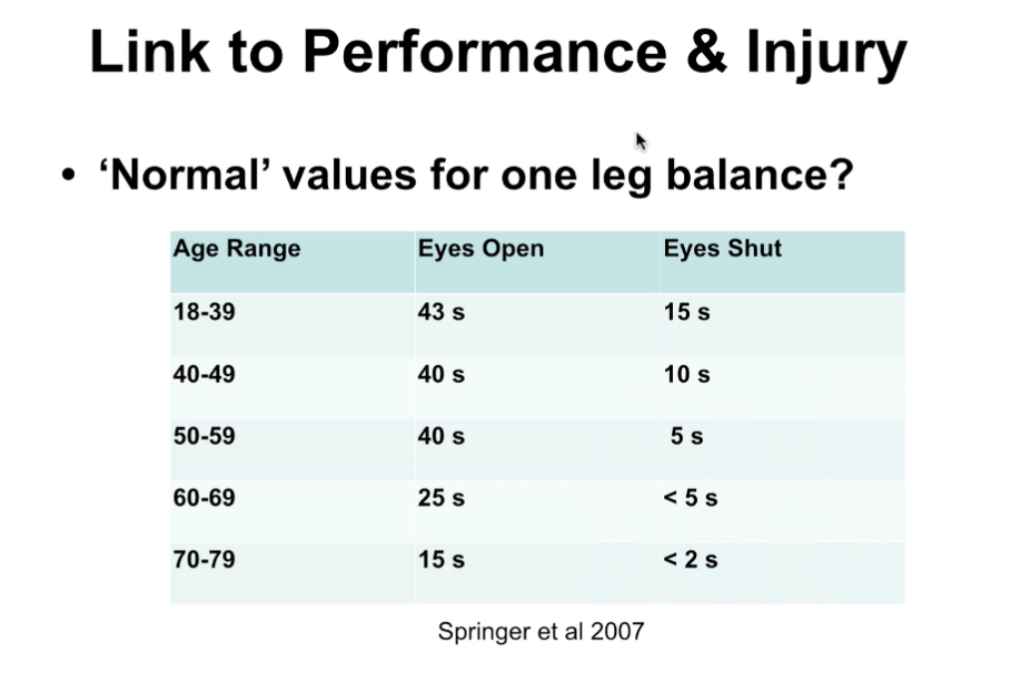 Single Leg Knee Dip
Single Leg Knee Dip
Stand on one leg and perform a single leg squat. Squat to approximately 30 degrees knee flexion. You are watching to control excessive upper trunk movement and the knee to stay in line with your foot and not go in. Compare to the other side.
We don’t have norms for studies for this one but we would like to see our active patients be able to do 10 reps without their knee moving in or excessive pelvic or trunk movement.
Flexion Test
Standing bend forward and touch your toes, then return to standing. The goal is for this movement to be smooth and pain-free with no support required from your arms.
Bridge
Lay on your back and bend your knees in full flexion and feet flat on the floor and close to the buttock. The goal is to lift your hips up off the floor towards the ceiling as high as possible. Try to not excessively arch your back but instead keep your pelvis tucked under so you are pushing from your glutes more.
We don’t have norms from studies for this exercise but you should be able to hold a 2 foot bridge for 60 seconds. In fact if you are active you should be able to control your pelvis for a single leg bridge for 10 seconds.
Use the same technique as above but then try to lift a leg. The goal is to not let your pelvis drop or shift.
Have more questions? give us a call and book a FREE 15 min consult.

Written by Kelly Barrie
Kelly is the owner of Avenue Physio and is proud to be part of a supportive and personable team that is dedicated to providing a high quality of treatment and experience to patients. She has been a physiotherapist for over 25 years treating a range of orthopedic conditions including chronic pain, motor vehicle collisions, and sports injuries (from the weekend warrior to high level). Kelly has always been passionate about movement and promoting healthy lifestyles. First, as a Certified Personal Trainer, and for the last 25 years as a physiotherapist. Kelly has completed the highest level of Certification in Manual and Manipulative Therapy that is internationally recognized (FCAMPT). Advanced knowledge of strengthening programs, manual therapy skills, and critical thinking optimize her treatment plans for her patients so they can reach their movement goals.
